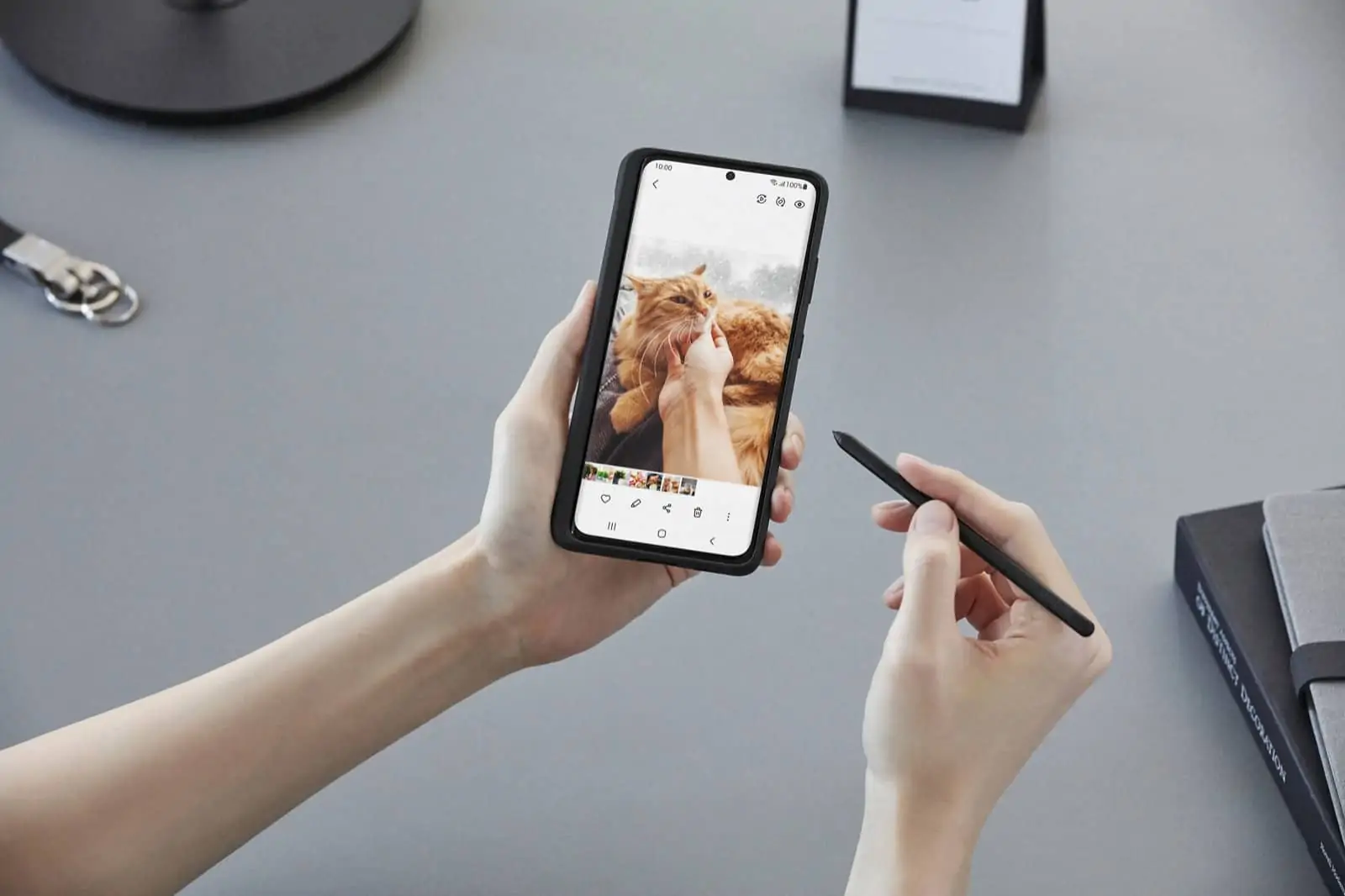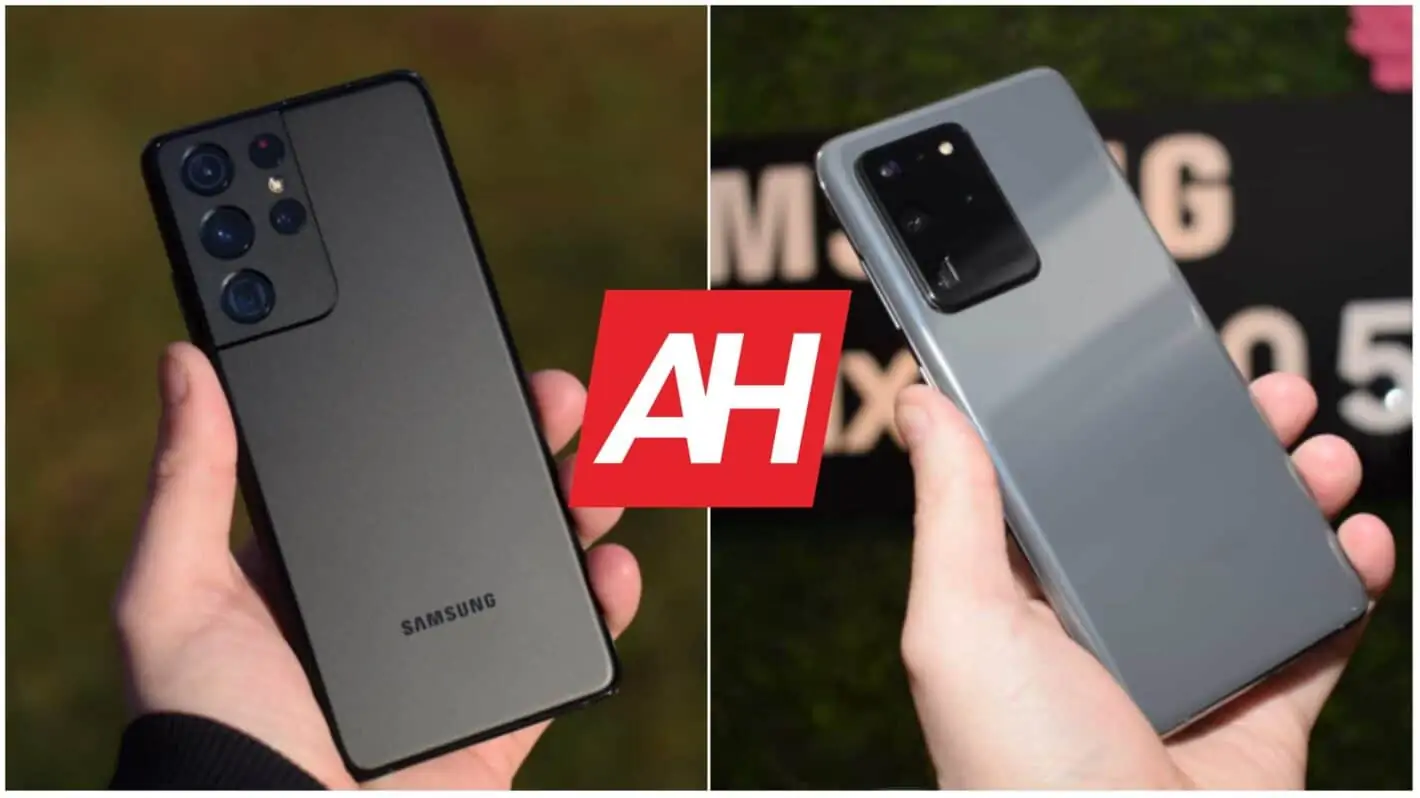The Samsung Galaxy S21 Ultra is the company’s new flagship smartphone. Having said that, comparing the Galaxy S21 Ultra vs Galaxy S20 Ultra makes a lot of sense. The Galaxy S20 Ultra is still a viable option, and many of you are probably wondering whether it’s worth getting at this point. You can probably get it for a considerably lower price tag compared to the S21 Ultra, so it may be worth it.
In this article, we’ll compare the two phones across a number of categories. We’ll kick things off by comparing their specifications, and then move to the design, display, performance, battery, camera, and audio categories. The Galaxy S21 Ultra is the most powerful S21 handset the company announced, and the S20 Ultra took that place a year ago. That being said, let’s get down to it, let’s compare the Samsung Galaxy S21 Ultra vs Samsung Galaxy S20 Ultra.
Specs
| Samsung Galaxy S21 Ultra | Samsung Galaxy 20 Ultra | |
| Screen size | 6.8-inch WQHD+ Dynamic AMOLED 2X display (120Hz adaptive refresh rate) | 6.9-inch WQHD+ Dynamic AMOLED display (120Hz) |
| Screen resolution | 3200 x 1440 | 3200 x 1440 |
| SoC | Qualcomm Snapdragon 888 / Samsung Exynos 2100 | Qualcomm Snapdragon 865 / Exynos 990 |
| RAM | 12GB/16GB (LPDDR5) | 12GB/16GB (LPDDR5) |
| Storage | 128GB/256GB, non-expandable (expandable in some countries) | 128GB/512GB (UFS 3.0); Expandable up to 1TB |
| Rear cameras | 108MP (f/1.8 aperture, OIS, 0.8um pixel size. Produces 12MP images with 2.4um pixel size) 12MP (ultrawide, Dual Pixel AF, 120-degree FoV, f/2.2 aperture, 1.4um pixel size) 10MP (telephoto, Dual Pixel AF, OIS, f/2.4 aperture, 1.22um pixel size, optical zoom 3x) 10MP (telephoto, Dual Pixel AF, OIS, f/4.9 aperture, 1.22um pixel size, 10x optical zoom, 100x Space Zoom) |
108MP (f/1.8 aperture, 79-degree angle lens, wide-angle) 48MP (f/3.5 aperture, 24-degree angle lens) 12MP(f/2.2 aperture, 120-degree angle lens, ultrawide) Depth Vision (ToF camera) |
| Front cameras | 40MP (f/2.2 aperture, 80-degree FoV, 0.7um pixel size, PDAF) | 40MP (f/2.2 aperture, 80-degree angle lens) |
| Battery | 5,000mAh, non-removable, fast battery charging (USB PD 3.0), Fast Wireless Charging 2.0, Wireless PowerShare | 5,000mAh, non-removable, 45W fast battery charging, 15W fast wireless charging, Wireless PowerShare (9W) |
| Dimensions | 165 x 75.6 x 8.9 mm | 167 x 76 x 8.8mm |
| Weight | 229 grams | 221 grams |
| Connectivity | 5G, LTE, NFC, Bluetooth 5.2, Wi-Fi, USB Type-C | LTE, 5G, NFC, Bluetooth 5.0, Wi-Fi, USB Type-C |
| Security | In-display fingerprint scanner (ultrasonic) | In-display fingerprint scanner (ultrasonic) |
| OS | Android 11 One UI 3.0 |
Android 10 Samsung One UI 2 (upgradeable) |
| Price | $1,199.99 | $1,399 |
| Buy | Samsung | Samsung |
Samsung Galaxy S21 Ultra vs Samsung Galaxy S20 Ultra: Design
The Samsung Galaxy S21 Ultra and S20 Ultra do resemble quite a bit from the front. It’s a bit of a different story on the back, but let’s talk about the front first. They both include extremely thin bezels, curved displays, and a centered display camera hole. Truth be said, the Galaxy S21 Ultra does look even better in comparison, due to seemingly slightly thinner bezels. From the back, it’s a bit of a different story.

The Galaxy S20 Ultra opted for a large, square-shaped camera setup. The cameras were all over the place, and mixed with an LED flash. The rear camera housing on the Galaxy S21 Ultra looks a bit neater. It is an extension of the phone’s frame, and it basically comes from the top and the side. There are still plenty of cameras here, but they do seem to be arranged to be more aesthetically pleasing. An LED flash is also located here. The camera bump is still quite considerable, though, and the whole housing is large.
The Galaxy S21 Ultra is made out of metal and glass, which is completely unsurprising. Its predecessor used similar materials, including the stainless steel frame. All the physical buttons are located on the right-hand side of both devices. The Galaxy S21 Ultra has a slightly smaller display, and it’s shorter, and narrower than the S20 Ultra. It is slightly heavier, and slightly thicker, though.
Both of these smartphones are extremely slippery in the hand. Considering their large footprint, that is a nasty combination for usage without a case, especially if you have small hands. So, it’s definitely recommended that you use a case regardless of which phone you decided to get.
Samsung Galaxy S21 Ultra vs Samsung Galaxy S20 Ultra: Display
The Samsung Galaxy S21 Ultra’s display is just a little bit smaller than the Galaxy S20 Ultra’s. You won’t even notice the difference, as the difference is only 0.1 inches. The Galaxy S20 Ultra features a 6.9-inch panel, while this year’s model comes with a 6.8-inch display. Both of those displays are Dynamic AMOLED 2X panels, with 3200 x 1440 resolution. Both of them offer 120Hz refresh rate as well.
The Galaxy S21 Ultra panel does offer a dynamic refresh rate, though, and it comes with better protection. The Galaxy S20 Ultra features a sheet of Gorilla Glass 6 on top of its display, while the Gorilla Glass Victus is included on the S21 Ultra. Both displays are curved, though that curve is not as pronounced as curved panels from some other brands. It does fit well into the aesthetics of the phone, though.
Are these displays any good, though? Well, they’re great, actually. Samsung’s flagship smartphones are usually amongst the very best when it comes to display quality. That’s not surprising considering that Samsung Display provides panels for many other companies, and it makes great displays. Both of these panels can get extremely bright, while they’re truly vibrant, the colors pop. Viewing angles are excellent, and those blacks are pitch black.
Truth be said, most people won’t even notice the difference between the two displays. Even holding one phone next to the other doesn’t show a huge difference in terms of sheer looks. The Galaxy S21 Ultra’s panel does offer an adaptive refresh rate, while it also allows you to use a 120Hz refresh rate and QHD+ resolution at the same time.
Samsung Galaxy S21 Ultra vs Samsung Galaxy S20 Ultra: Performance
When it comes to performance, well, you won’t notice much difference in day-to-day usage. In fact, you’ll be hard-pressed to notice any difference. Both of these are immensely powerful smartphones, and even though the Galaxy S21 Ultra is more powerful on paper, most people won’t be able to realize that. Only when you push the phone to its processing and graphical limits, you’ll be able to see the difference.
The Galaxy S21 Ultra is able to load games a bit faster, and when it comes to apps, that is really difficult to notice. The difference is negligible. The Galaxy S20 Ultra is equipped with the Snapdragon 865 / Exynos 990 (depending on region), while the Galaxy S21 Ultra offers Snapdragon 888 / Exynos 2100 combo. The chips in the Galaxy S21 Ultra are newer, and they are less power-hungry.
No matter what you do on these two phones, they’ll deliver. They can multitask extremely fast, while multimedia consumption is not an issue at all. They’re fluid no matter what you do, even when you’re gaming. Graphically-intensive games will do excellent on these two phones, even the cutting-edge ones on Android.
Samsung Galaxy S21 Ultra vs Samsung Galaxy S20 Ultra: Battery
These two smartphones do offer the same battery capacity. Each of them includes a 5,000mAh battery on the inside. Is there any difference in longevity, though? Well, yes, there is. The Galaxy S20 Ultra offered really good battery life, and the S21 Ultra adds to that. The phone does offer better battery life, but don’t expect miracles. The Galaxy S21 Ultra is a powerful machine, and you shouldn’t have issues going over the 6-hour screen-on-time mark, and then some.

Do note that your battery life will depend on your battery usage, of course. To each of us, that is different. Gaming can drastically decrease battery life, and other processor-intensive tasks as well. Regardless, the battery life on each of the two phones is more than good, and very few people will have complaints in that regard.
Now, in terms of charging. The Samsung Galaxy S21 Ultra doesn’t offer faster wired charging compared to the Galaxy S21 and S21+. You’ll be able can charge the phone’s battery up to 50-percent in 30 minutes. The Galaxy S21 Ultra charging is based on USB PD 3.0 standard, though it supports QC 2.0 as well. The Galaxy S20 Ultra supports the same standard. Do note that these speeds are for the 25W fast charger, by the way.
Both devices also support wireless charging. We’re looking at Fast Wireless Charge 2.0 here. In other words, both devices support 15W wireless charging. On top of that, you’ll get access to Wireless PowerShare as well, in case you need to charge your true wireless earbuds, or give a bit of juice to another smartphone that supports wireless charging.
Samsung Galaxy S21 Ultra vs Samsung Galaxy S20 Ultra: Cameras
When it comes to cameras, the Galaxy S21 Ultra does bring some improvements to the table. The device comes with a second-gen 108-megapixel main camera from Samsung’s ISOCELL. It does perform better than the one on the Galaxy S20 Ultra, which did have some issues at launch. The new sensor can capture brighter images with more details in low light, while the performance during the day is slightly improved. It handles HDR scenarios really well as well.
100x ‘Space Zoom’ is back, while you do get an option to capture 3x and 10x shots as well, with optical zoom. Ultra-wide shots are also better here than they were in the Galaxy S20 Ultra, and the Galaxy S20 Ultra can offer really good pictures in that regard. As always, Samsung did a really good job when it comes to cameras on its flagships. The Galaxy S21 Ultra is a notable improvement in that regard, but the difference is not colossal.
Audio
In terms of audio, well, you won’t notice that much of a difference. Both phones are equipped with stereo speakers, and do offer similar sound via a good pair of headphones. Having said that, they do offer great sound. Those speakers are really good. Not only are they loud, but they can produce really rich sound as well. We did notice some difference, but it is minor. The point is, they’re amongst better offerings in the market.
When it comes to sound via headphones, you can expect to get rich sound, which is well-balanced across the spectrum. In this area, the two phones are also quite similar. Neither of them offers a 3.5mm headphone jack, though, so keep that in mind. You’ll have to use a Type-C dongle, Type-C earphones/headphones, or utilize Bluetooth. There are options, but an audio jack is not one of them.

